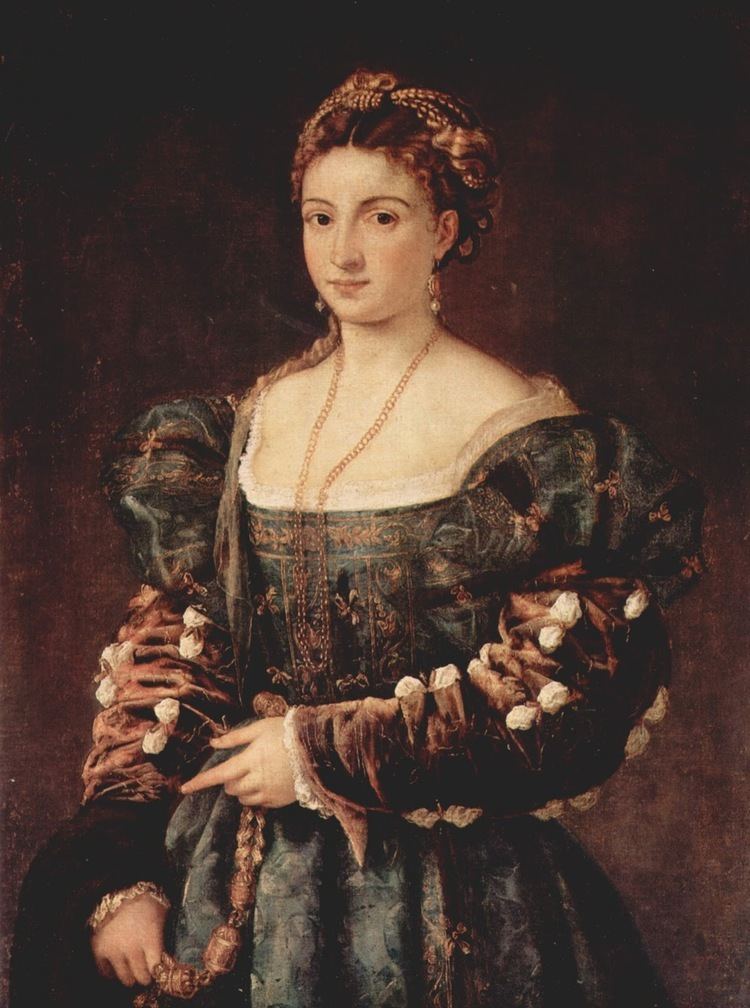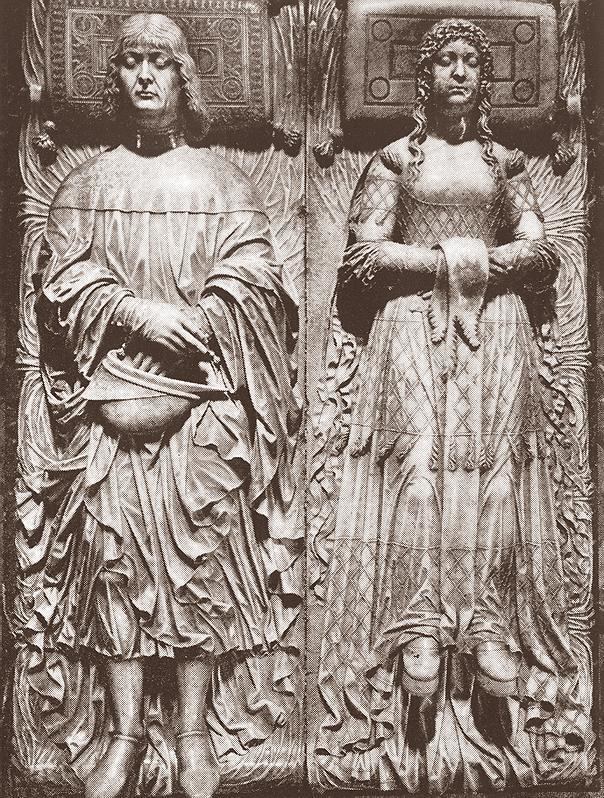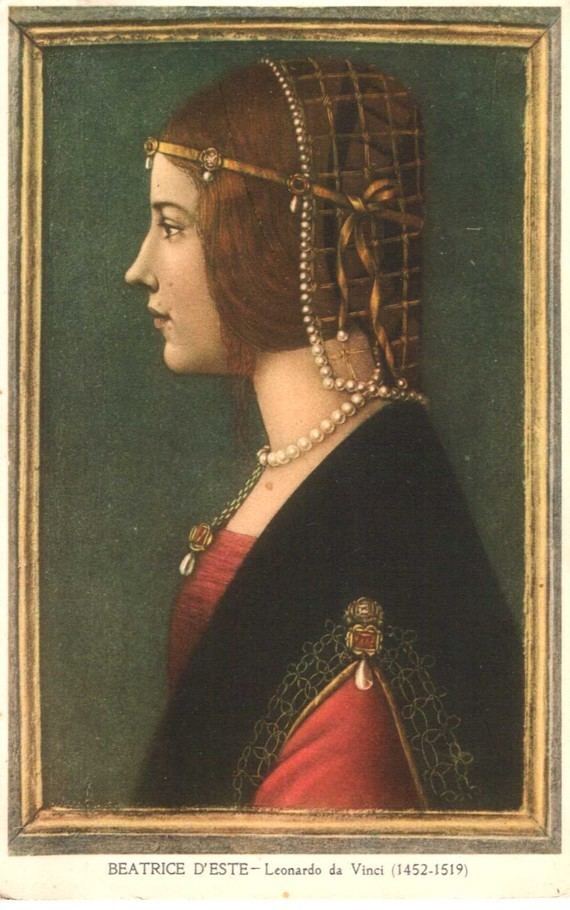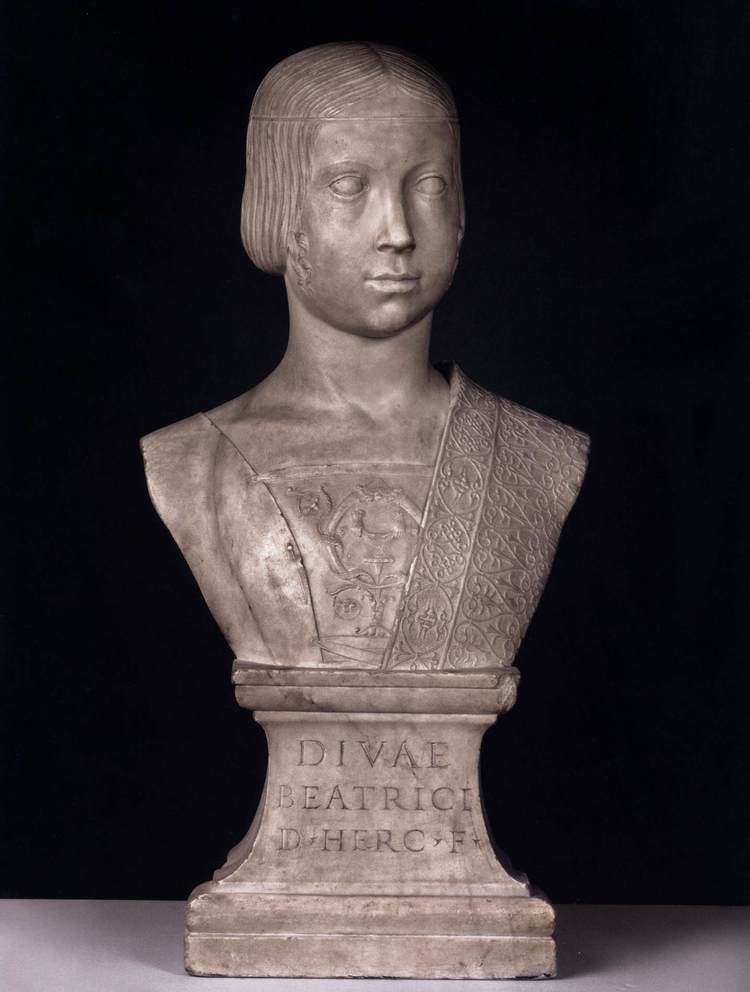 | ||
Born 29 June 1475Ferrara, Italy ( 1475-06-29 ) Children Francesco II Sforza, Maximilian Sforza Parents Ercole I d'Este, Duke of Ferrara, Eleanor of Naples, Duchess of Ferrara Siblings Isabella d'Este, Alfonso I d'Este, Duke of Ferrara, Ippolito d'Este Similar | ||
Beatrice d'Este (29 June 1475 – 3 January 1497), duchess of Bari and later of Milan, was the wife of the Milanese ruler Ludovico Sforza (known as "il Moro"). She was one of the most beautiful and accomplished princesses of the Italian Renaissance. A member of the Este family, she was the younger daughter of Ercole I d'Este and the sister of Isabella d'Este and Alfonso d'Este. Along with her sister, Beatrice was noted for her excellent taste in fashion and for having invented new clothing styles.
Contents
- Luoghi della beata beatrice d este wmv
- Marriage
- Life and death as duchess consort
- Legacy
- Issue
- Ritratto di dama
- Literature
- References

Luoghi della beata beatrice d este wmv
Marriage

The Ferrarese house of Este and the Milanese house of Sforza had always been on friendly terms and in 1480, in order to cement an alliance, Ludovico Sforza formally asked Ercole d'Este to give him the hand of his daughter in marriage. Ludovico, who was then duke of Bari and regent to the duke of Milan, had originally requested a betrothal to Isabella, Beatrice's older sister, but because she was already promised to Francesco Gonzaga, Ercole offered him Beatrice instead. Il Moro made no objection to the arrangement and Beatrice was married to him in January 1491.
The official nuptials were to have taken place in 1490 in a double wedding with Beatrice marrying Ludovico and Isabella marrying Francesco at the same time, but the Duke of Bari postponed it more than once. Finally, around a year later, they were wed in a double Sforza-Este wedding: Ludovico married Beatrice, while Beatrice's brother, Alfonso d'Este, married Anna Sforza, the sister of Gian Galeazzo Sforza. Leonardo da Vinci orchestrated the wedding celebration.
Life and death as duchess consort
Beatrice had been carefully educated, and availed herself of her position as mistress of one of the most splendid courts of Italy to gather around her learned men, poets and artists, such as Niccolò da Correggio, Bernardo Castiglione, Donato Bramante, Leonardo da Vinci, and many others.

In 1492 she visited Venice as ambassador for her husband in his political schemes, which consisted chiefly of a desire to be recognized as duke of Milan. On the death of Gian Galeazzo Sforza, Ludovico's usurpation was legalized, and after the Battle of Fornovo (1495), both he and his wife took part in the peace congress of Vercelli between Charles VIII of France and the Italian princes, at which Beatrice showed great political ability.

However, her brilliant career was cut short by death through childbirth, on 3 January 1497 at the age of 21. In a letter written hours after her death, Ludovico informed his brother-in-law Francesco Gonzaga that his wife, "gave back her spirit to God" half an hour after midnight. Their child had been born at eleven at night and was a stillborn son.
Legacy

Beatrice d'Este belonged to the best class of Renaissance women, and was one of the cultural influences of the age; to a great extent, her patronage and good taste are responsible for the splendour of the Castello Sforzesco in Milan, the Certosa of Pavia, and many other famous buildings in Lombardy. Her tomb is preserved in the Certosa di Pavia where she is buried beside her husband Ludovico Sforza.
Issue
Her children by Ludovico Sforza:

Ritratto di dama
Beatrice d'Este is very often mistaken as the sitter of Ritratto di dama by Ambrogio de Predis at the Pinacoteca Ambrosiana in Milan. Investigations between 2010 and 2013 by Martin Kemp/Pascal Cotte and a German researcher brought to light strong evidence that the true sitter of the painting is not Beatrice d'Este but Anna Sforza. A historically confirmed profile portrait of Beatrice d'Este can be found in the Pala Sforzesca. Another authentic document of Beatrice d'Este's appearance can be found in a bust by Giovanni Cristoforo Romano in the early 1490s.
